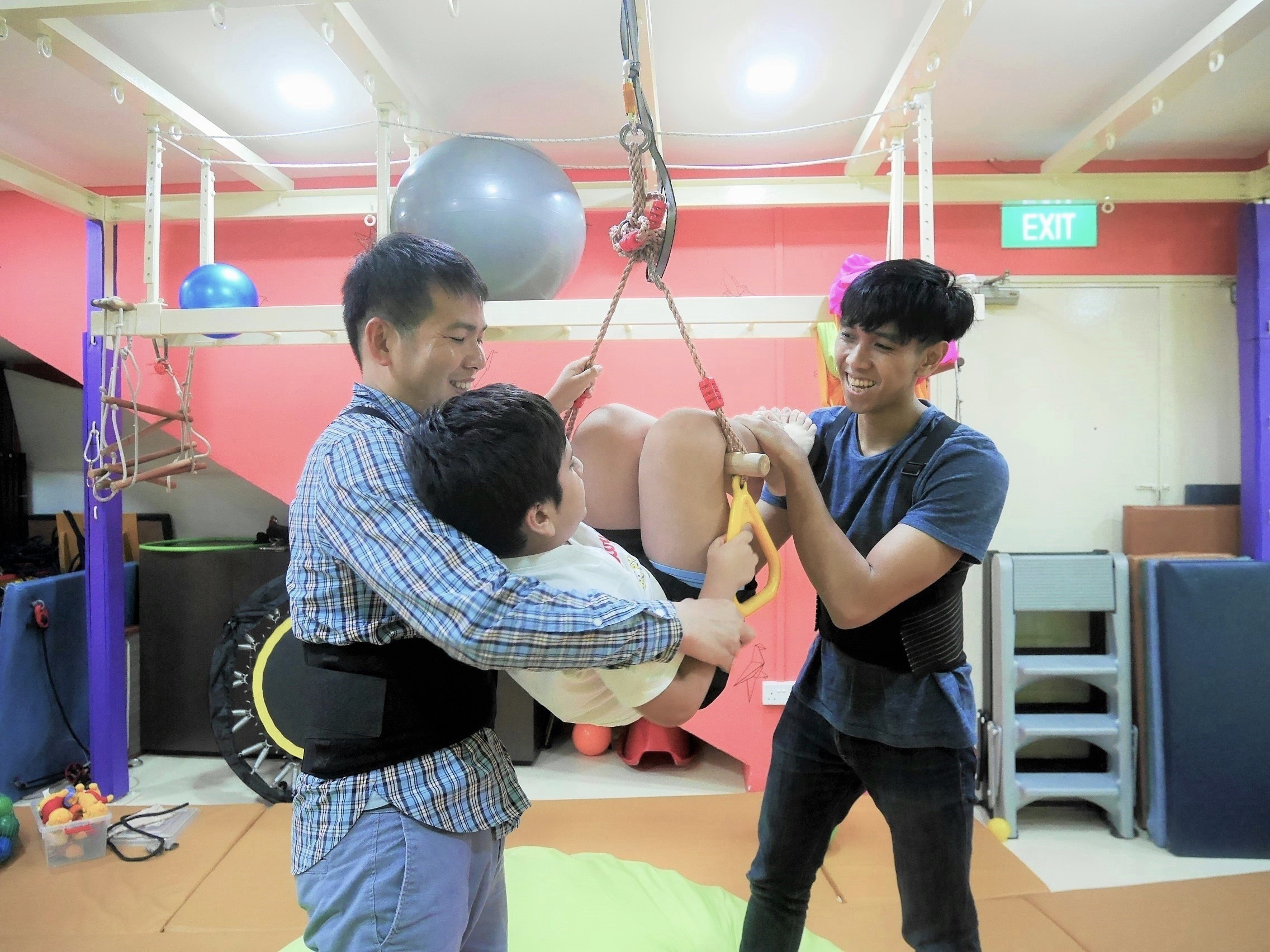Singapore Brain Development Centre
Our Location
1 GOLDHILL PLAZA #01-11 S(308899)
DEVELOPMENTAL TRAINING
Building solid foundations in your child's
development & learning

Did you know We have 7 senses?
Sensory integration involves the brain’s processing of information from the five main senses (sound, sight, touch, taste, and smell), as well as the lesser-known senses of vestibular (balance and movement) and proprioception (body awareness, posture, and position). These senses work together to coordinate body movements and maintain balance. The vestibular sense helps with balance during body position changes, while the proprioceptive sense provides awareness of the body and its surroundings. Delays in relaying messages to these senses can result in difficulties with balance, coordination, body awareness, and spatial orientation.


Why is Sensory Integration So Important?
Sensory integration plays a critical role in early childhood development. While most children follow expected developmental milestones, some may struggle with processing sensory information, leading to a condition known as Sensory Processing Deficiencies.
Difficulties related to sensory integration can become apparent as a child grows. Some children may have slower sensory responses and require extra time to coordinate their senses, while others may need assistance to cope with everyday tasks. These challenges can affect their attention, learning, and behaviour.
Signs of Sensory Processing Deficiencies:
- Over- or under-sensitivity to sensory input: Children may be extremely sensitive or show little response to sensory stimuli such as touch, sound, taste, or smell.
- Sensory-seeking or avoiding behaviors: Some children may actively seek out sensory input by constantly touching objects or seeking movement, while others may avoid certain sensory experiences.
- Difficulty with transitions: They may struggle with transitioning between activities or environments, becoming upset or overwhelmed.
- Poor attention and concentration: Sensory processing difficulties can affect a child's ability to focus and maintain attention, leading to difficulties in school or other tasks requiring sustained focus.
- Poor coordination and balance: Children may have difficulties with motor skills, such as clumsiness, frequent tripping or falling, and difficulties with activities that require coordination.
- Difficulty with self-regulation: Children may have trouble regulating their emotions, leading to frequent meltdowns, tantrums, or difficulty calming down.
- Poor organisation of behaviour. Difficulty with planning, organisation, and time management. Forgetfulness and disorganisation.
- Challenges with social interactions: Children with sensory processing issues may struggle with social skills, finding it difficult to engage with peers, respond appropriately to social cues, or maintain personal space.

SCHEDULE A COMPLIMENTARY CONSULTATION
Key Highlights of our Sensory Integration Program
At SBDC, we work on sensory integration from a developmental pathway. We investigate and understand the child’s developmental milestones and find gaps in the milestones. We will support and facilitate closing the gaps and integrating the various systems to work simultaneously.
- INTEGRATED DEVELOPMENTAL MODEL
Sensory Integration focuses on a holistic approach that emphasizes the integration of various developmental areas, including social, emotional, motor, sensory, language, and cognitive skills. It aims to promote integrated learning by providing diverse sensory experiences to establish a strong foundation for social, emotional, and academic development.
- Exciting Sensory rich environment
The environment plays a crucial role in sensory stimulation. Our sensory-rich gyms are equipped with various equipments such as trampolines, ladders, swings, balance beams, and exercise balls to provide a unique sensory experience for your child. These activities are carefully designed to challenge and stimulate your child’s senses, creating a supportive environment for their sensory development.
- Fun and Play-based Activities
Despite having sensory deficiencies, it’s important to remember that your child is still a child who enjoys playing. In our therapy, we utilize activities such as climbing, spinning, swinging, rocking, and bouncing to keep the child engaged and entertained. We also incorporate a variety of games that stimulate your child’s senses, making the therapy enjoyable and stimulating for them.
- Maxmise Effectiveness
In addition to Sensory Integration, our team also utilises other effective therapies that can work synergistically. These include the Listening Program, DIR Floortime, Cognitive, and Language Training. These complementary therapies are integrated to support the holistic development of the child, addressing various aspects of their cognitive, sensory, and language skills.

Parent & Children Testimonials
“Kate was lacking in self-confidence. We observed that she had issues with her motor skills. Simple things like Physical Education, balancing and jumping to other kids are very intuitive. But for her, she needs a lot more effort. Over the years, we’ve seen improvement in Kate. The results are really beyond words. Whenever we look back, we are totally happy with what we’ve seen.”
“My son has shown great improvement after attending the program. He is able to focus more, learn effectively, and achieve better academic results. Hope that he can continue to enjoy the learning experience in SBDC and apply what he has learned throughout.”
Empower your child to achieve more through Sensory Integration!
Find out how Sensory Integration can impact your child’s learning and cognitive development today! The first step is to get in touch with us, to schedule an appointment so that we can get to know you, and help you understand your child better. Contact us today!
